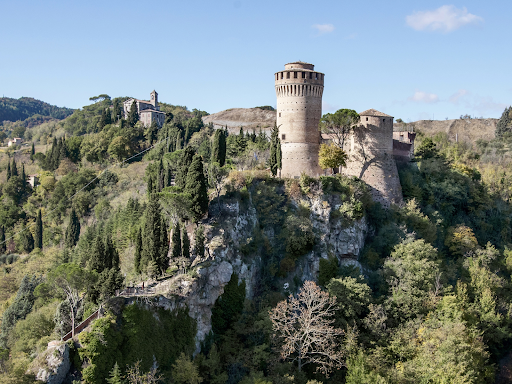Anyone who has queued for major museums or packed onto city vaporetto boats knows how crowded Italy can feel. Yet, beyond the main routes, there are places where visitors still feel like true explorers. Brisighella in Emilia-Romagna is one such spot, its rocky surroundings and solitary towers giving it the look of a painting more than a real town.
Its medieval streets invite deliberate, unhurried wandering. The elevated walkway, which threads behind buildings and above alleyways, offers private views and moments of quiet reflection. From here, the hills of Emilia-Romagna make inviting walking territory.
In Sicily, the Via dei Frati trail offers another kind of escape. Stretching from Caltanissetta to Cefalù, it winds for 54 miles through the Madonie mountains without the queues and tour groups that define many Italian routes. Each day ends in villages like Gangi, small, welcoming and almost entirely untouched by international tourism.
Basilicata’s Venosa, once an important Roman centre, now stands as a small town with big stories carved into its stones. Roman ruins, Jewish catacombs and a fortress-like castle are all part of the landscape. Nearby, castles at Melfi and Lagopesole and the ducal palace at Pietragalla sit in near anonymity despite their scale and beauty.
Then there are the extras: a riverside eco-lodge in the Apennines, where stars replace screens; Cividale with its Lombard chapel and turquoise river; Chioggia—a working, more modest cousin of Venice; the sturdy mountain town of Santo Stefano d’Aveto; foodie-friendly Loazzolo in Piedmont; and the haunting Roman city of Urbs Salvia near Urbisaglia. Together, they prove that Italy still has plenty of room left on the map for travellers willing to look beyond the obvious.

